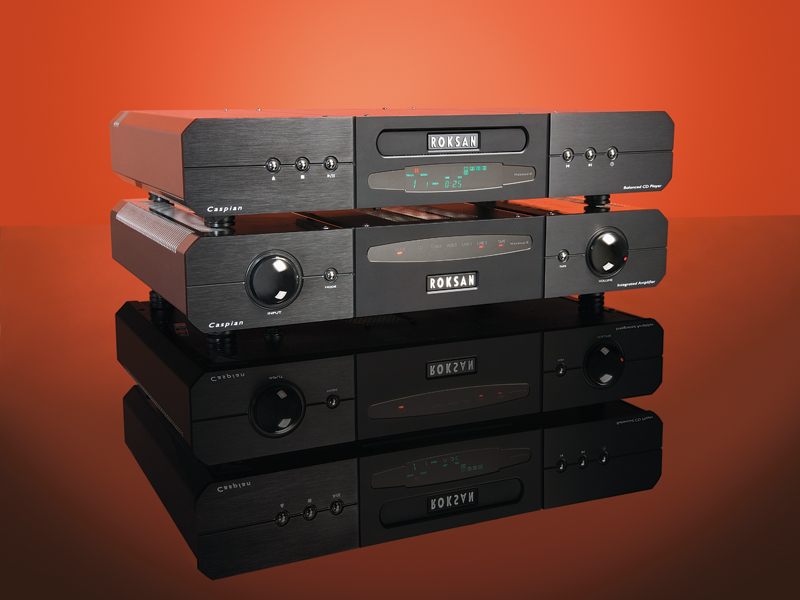TechRadar Verdict
Pros
- +
Well-designed
- +
Fine remote control
- +
Good basic sound quality
Cons
- -
Awkward positioning of drawer and display
Why you can trust TechRadar
Roksan organises its electronics into several ranges of which the Caspian M2 range is half way, senior to the Kandy K2 and one step short of the Platinum series (which includes component pre and power amplifiers).
The Kandy and the M2 series are quite different internally, though surprisingly it is the Kandy amplifier which, on paper, is the more powerful of the two.
The M2 replaces the original Caspian range (which was launched the best part of 12 years ago) and the Caspian M1 series electronics, which underwent significant improvements internally.
The M2 is, in essence, a complete new model range and the CD player and amplifier are intended to leverage the performance of the company's mainstream electronics products upwards, while retaining a mainstream price.
Stylish pairing
Both the M2 components are unusual in the way they're presented. Although the fascia is an aluminium die-casting, the top panel is made from stainless steel, a harder material than aluminium and not easy to work with. But it has an excellent appearance and can be formed much thinner than aluminium.
It's structural properties mean it can be used to make a slimmer, smoother exterior, especially where it wraps around the base. It also gives the units a very distinctive and, we think, unusually attractive appearance.
Sign up for breaking news, reviews, opinion, top tech deals, and more.
Above all, the M2 is a well-turned out and arguably stylish pairing, though they are essentially classic stereo components with a bare minimum of flim-flam. They are presented well, with a contrasting black slab fascia and display windows, which are curved in characteristic Caspian style.
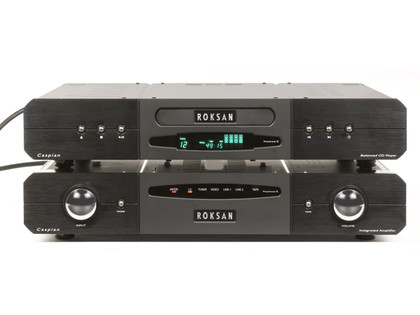
The rest of the structure is also well finished and typical of Roksan's great build. The M2 components are each supplied with an identical remote control, the design of which we haven't encountered elsewhere, though presumably it comes from a standard OEM supplier.
It is a full system remote, pre-programmed for both components in the Caspian and the Kandy ranges, but with enough buttons to control the amplifier and CD player, without needing to select the specific component. The unit also includes an impressively large, clear backlit LCD display.
The same handset will also control the matching tuner from each range.
Short-circuit protection
The updated M2 Caspians are simple looking, but internally sophisticated mid-market products, senior to (and more expensive than) the base level Kandy range.
Power output of this bipolar design is 85 watts per channel, which surprisingly is quite a bit less than the cheaper Kandy, which has a MOSFET output stage and is rated at 125 watts But the differences in output stage architecture make direct comparisons of this kind problematical. So what do you get for your money?
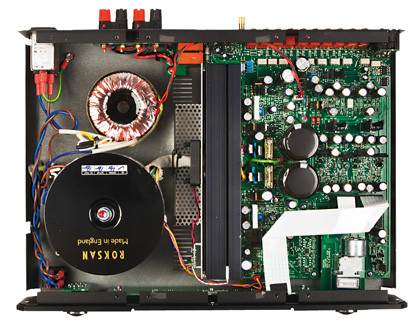
The amplifier has six inputs, including one for tape, plus a tape out and two pairs of preamplifier outputs, which allows the Roksan to drive one or two external power amplifiers – if more power is needed (one example would be a bi-amplified system).
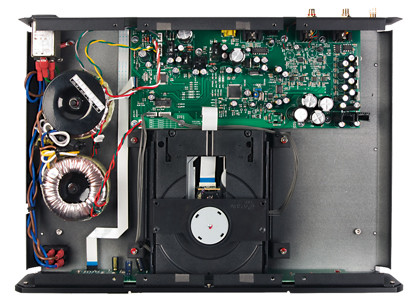
One of the inputs is also available in an alternative balanced XLR connection, matching a similar output provision on the CD player.
There is also a power amplifier input too, though this needs to be activated internally. The internal design includes two mains transformers, a 350VA torroid for the high-power stages and a smaller 60VA torroid for the preamplifier. Both are described as ultra-low-noise, low-leakage designs.
A mains input filter is also included and output protection is provided by a thermostatically controlled cooling fan, short circuit protection and power supply failure detection. This cuts the output until the cause of the problem has been resolved (relays protect the output stage).
The various fan and protection circuits are more comprehensive than with the Kandy which, according to Roksan, is due to the fact that the amplifier has a very wide, open bandwidth and a correspondingly rapid rise time – which can trigger momentary high current flow. The Kandy appears to be a much slower circuit. And, in any case, MOSFETs are inherently self-limiting, at least to some extent.
Only the key features – source selection and volume, plus a mode switch and tape select are available on the front panel of the two M2 units. Other features can be accessed from the remote control.
The partnering CD player feature set corresponds almost exactly to what you would expect of a standard CD player. The display is of good quality and informative, though it is mounted below the disc loading tray, which means it is not necessarily readable if the player is positioned below the eye line and the drawer is open.
The front panel controls take care of the basics: track access, play, pause and stop and the quick-acting loading drawer. Around the rear are the usual single-edged outputs and the XLR balanced connectors to match the amplifier provision.
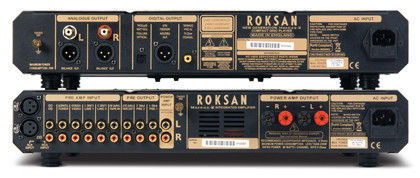
There are also no less than three digital outputs – a TOSLINK optical, S/PDIF electrical out and an AES/EBU balanced output via an XLR connector. A surfeit of riches!
A clear edge
The two M2 components don't appear to need extensive running in and in day to day use are fully on song within less than half an hour. Most of the listening was done using balanced interconnects. Latterly Roksan's own Pulse cables, which worked particularly well, easily outperforming a relatively low-end Nordost cable.
The CD player has particularly good timing and a more crisply defined and propulsive quality than some of the better known players in the same price territory. The same applies to the amplifier, which is sharp and on the button, almost as though it is balancing on the balls of of its feet, making some of the more prominent pretenders to the title of best disc player in its price class, however smooth and polished they may sound, seem a little slack.
In fact, there are no complaints about the M2 CD player. Yes, we missed the fact that it lacks SACD compatibility, but based purely on sound quality there is not usually a lot to choose between the two formats, except that the best hybrid SACDs sound just a little sweeter, more organic and less processed. But there are plenty of individual titles which contradict this, or that don't show a specific advantage in either direction.
Much the same can be said of the amplifier. Again, the M2 can sound a little rough around the edges, but its muscularity and drive gives it a clear edge over most competitors, most of the time.
It has solid stereo imagery and is even capable of the kind of subtlety that helps the ear interpret delicate, low-level ambient information as clues to depth imagery. Think of Mahler's off-stage band in several of his symphonies, or the kind of depth that helps create the sense that you are listening to a recording made in an identifiable acoustic of a particular size, which can often be sensed almost subliminally in live recordings.
The amp has the kind of punch and dynamics that you would expect of a grown-up model and even more than the CD player. Its excellent timing, for example, works really well with difficult and large scale material. It is also most effective at moderate or even fairly high volume levels, though it is not completely even in the way it treats music.
It is not the answer to all musical requirements and if it runs out of steam it can sound a little harsh and messy. But this is the exception. Selecting almost at random from discs that saw service during this test and which were not preselected for any compelling reason, the amplifier and CD combination worked really well with a recording of Britten's War Requiem (Rattle/CBSO), especially the male voices, Scott Walker's Tilt and some Alison Krauss and Union Station recordings.
All the above found the Roksan combination's sweet spot. Some recordings – an example being Jennifer Warnes The Well (SACD version) – seems to chime better with the (cheaper) Marantz KI Pearl Lite SACD player, as well as benefitting from the DSD recording.
Others, an example being Schoenberg's Gurrelieder (Esa-Pekka Salonen/Philharmonia) sounds slightly rougher around the edges through the Roksan as a DSD recording and as a Red Book CD, especially at the high volume levels that this music demands. But at reasonable levels within the compass of the amplifier, Roksan offers a bold, gripping and undeniably authoritative sound.
Persuasive and gripping
The M2s are very nearly the complete package, despite being a little uneven in their qualities and clearly not ideal for every disc it played. But this is a criticism that can be made of just about any comparable amplifier and disc player at this price level.
Other similar combinations (the Marantz Pearl Lites are obvious examples) are sometimes tidier, but often less successful at scaling the heights the Roksan was able to reach.
So, in conclusion, the M2s are often the more persuasive and gripping choice. The two components are also attractively designed and built, and their compact dimensions are a definite plus.
Follow TechRadar Reviews on Twitter: http://twitter.com/techradarreview
